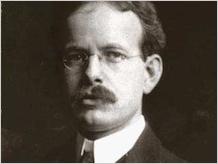 George Ellery Hale
George Ellery Hale
Hale was a man of remarkable energy, intuition, and purpose. It was said of Hale that he "could achieve more than ten men in half the time." Behind the scenes, Hale paid for his frantic pace with shattered nerves. Still, he pushed on to create some of the greatest machines of discovery ever imagined. His final masterpiece, the great 200-inch Palomar telescope, would severely test the limits of technology and once again change our understanding of the universe.
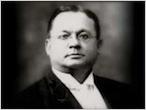 William Rainey Harper
William Rainey Harper
William Rainey Harper was the first President of the University of Chicago and saw Hale’s gathering fame in astronomy as a way to enhance the reputation of the young University. Harper’s famous energy and persuasive powers--it was said that no one could resist his arguments--made a big impression on the young George Hale. Together they would try to raise a million dollars to build the biggest refracting telescope in the world.
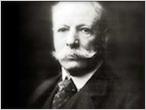 Charles T. Yerkes
Charles T. Yerkes
In addition to his bankroll, Charles T. Yerkes had amassed a reputation as a crook, a stock swindler and ruthless dealmaker. He had spent time in jail. But Charles Yerkes, who'd had a telescope as a child, was intrigued by the idea of his name on the world’s biggest telescope. He wanted it placed in the center of Chicago for all to see. Then came the great economic panic of 1893. Hale’s lifelong struggles with powerful backers and nervous exhaustion had begun.
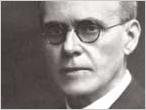 George Ritchey
George Ritchey
George Ritchey was a perfectionist’s perfectionist. His primary specialty was grinding glass for Hale’s telescope mirrors. Hale had known him for years and was impressed by his extreme dedication. Ritchey was quiet, temperamental and aloof. One of Ritchey’s ideas for lens design, the Ritchey-Cretien design, was revolutionary and is still used today. One of the hardest things Hale ever had to do was fire him.
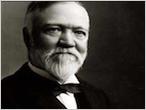 Andrew Carnegie
Andrew Carnegie
Tycoon, philanthropist and self styled poet of the American work ethic, Andrew Carnegie was the perfect match for George Ellery Hale’s ambition. Carnegie was interested in science and astronomy. Hale was interested in bigger telescopes, which happened to be extremely expensive. Hale’s eager courtship with Carnegie would ultimately bear fruit in the form of the powerful new telescopes and research facilities. For Hale, It was a stunning display of persuasion and determination. But even more money would be needed.


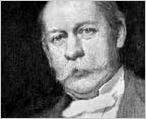 John D. Hooker
John D. Hooker
Hale had learned by 1903 that men with lots of money often had an amateur interest in astronomy. Los Angeles Hardware king John D. Hooker was no exception. He was fascinated when Hale spoke about the stars. Hale became a regular visitor to the Hooker mansion. Hale had wanted an 84-inch mirror for an important new telescope on Mount Wilson. Hooker said “make it 100-inches and I shall pay for it.” Hale was elated but soon enough, Hooker changed his mind. It would lead to Hale’s first nervous breakdown.
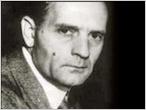 Edwin Hubble
Edwin Hubble
There were two Hubbles. One was the inventive midwest-born astronomer who confirmed the idea that the universe was expanding, a ground breaking discovery made possible with Hale’s 100-inch Telescope in 1929 which would permanently put Hubble's name in the history books and on the Hubble Space Telescope. The other Hubble was a publicity seeking egotist with an affected British accent who enjoyed holding court at the observatory dinning hall impressing everyone within reach.
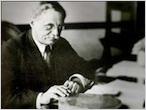 Elihu Thompson
Elihu Thompson
Elihu Thompson has been all but forgotten by most Americans but, in his day, his fame rivaled that of Thomas Edison. Over a 50-year career he was granted 696 U.S. patents. With Edison he cofounded the General Electric Company. When Hale was desperate for better telescope mirrors, Thompson was sure he could master the technology for a fused quartz mirror blank. Hale would spend a fortune on the new technology. It’s complete failure almost bankrupted the Palomar telescope project.
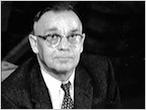 George McCauley
George McCauley
George McCauley is certainly one of the heros of the Palomar story. He was a quiet man who saw the telescope mirror as a wonderful engineering challenge. In 1931, Hale was desperate for a successful 200-inch mirror. McCauley convinced Hale that Corning’s Pyrex was the better material for his giant mirror and took over from Elihu Thompson. McCauley would ultimately prove to be right, but when the the glass was finally poured he was relieved to see it go.
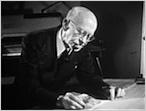 Russell Porter
Russell Porter
Russell Porter was an arctic explorer, charcoal artist, architect and amateur astronomer. Hale had seen his telescope articles and designs in popular magazines. Porter was astonished when Hale sought him out to help design the 200-inch telescope. He would become one of the key players and beloved personalities on the Palomar project. In addition to his design innovations, he became just as famous for his photo realistic 3D cutaway drawings of the 200” telescope, which engineers found just as helpful as their blueprints.
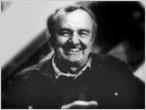 Allan Sandage
Allan Sandage
Allan Sandage was the star pupil of Edwin Hubble and spent most of his career continuing the work Hubble began. Opinionated, brilliant and not nearly as comfortable with the media as Hubble, Sandage nonetheless attracted many journalists over the years. He was one of the key players in the discovery of quasars and became one of the foremost astronomers of our time.
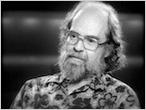 James Gunn
James Gunn
An "unstoppable genius" at all three important astrophysics skills--observing, theorizing and instrument building--Jim Gunn is known as “The Triple Threat” among his fellow astronomers. In the 1980s Gunn and his Caltech colleagues took on the challenge of designing the camera for the Hubble Space Telescope. Their work at Palomar rendered the Hale Telescope 100 times more powerful and led to the incredible Hubble Space Telescope images we see today. Gunn has unending admiration for the Hale 200-inch telescope.
